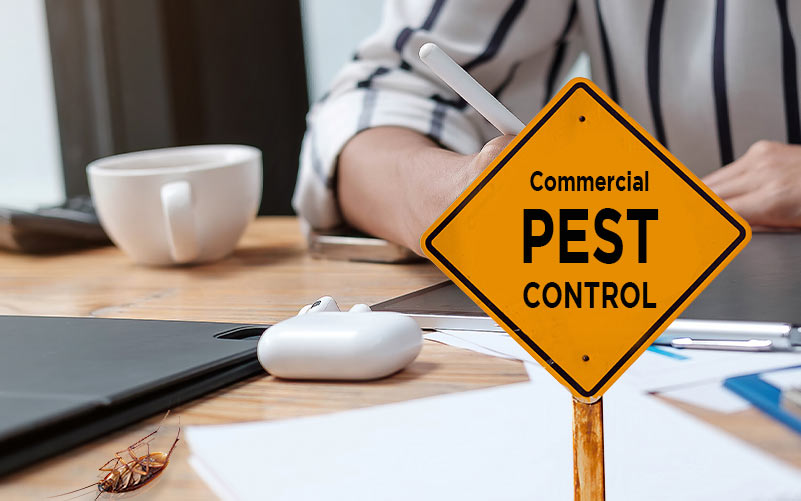A1 Bed Bug Exterminator Charlotte - Specialized Bed Bug Removal
A1 Bed Bug Exterminator Charlotte - Specialized Bed Bug Removal
Blog Article
Bed Bug Treatment Failure: Contrasting Chemical Vs. Non-Chemical Solutions
In the realm of bug control, especially when handling the persistent problem of bed bugs, the selection between chemical and non-chemical therapy remedies can be a pivotal one. Both strategies provide distinctive advantages and drawbacks, influencing aspects such as efficiency, safety and security considerations, and overall price. By checking out the nuanced information of each approach, a more clear understanding of which path to pursue in dealing with a bed pest invasion can be acquired.
Effectiveness of Chemical Treatments
Chemical therapies for bed insect infestations have actually been commonly identified for their powerful and fast efficacy in removing these bugs. When thinking about the efficiency of chemical treatments, it is vital to comprehend that they can supply a comprehensive and quick service to a bed pest problem. Specialist pest control operators frequently depend on insecticides to target bed pests at various phases of their life cycle, consisting of grownups, fairies, and eggs. These chemicals normally work by interfering with the bed pests' nervous system, resulting in paralysis and eventual fatality.
Furthermore, chemical treatments have the benefit of offering recurring effects, meaning that they can proceed to eliminate bed bugs also after the first application. This recurring action is specifically beneficial in combating any type of possible re-infestations. In addition, the quick action of chemical treatments can bring alleviation to people dealing with extreme bed insect infestations, enabling them to gain back control of their living spaces promptly.
Safety And Security Issues With Chemical Solutions
When utilizing chemical solutions for bed pest therapy is making sure the safety and security of residents and the environment,One crucial element that requires cautious factor to consider. While chemical treatments can be effective in removing bed bugs, they may position dangers if not managed effectively. One of the primary safety concerns with chemical options is the prospective harm they can create to human wellness. Exposure to certain chemicals utilized in bed insect therapies can bring about respiratory problems, skin irritability, or other unfavorable responses, particularly in people with pre-existing conditions or level of sensitivities. In addition, improper application or dose of chemical pesticides can lead to harmful residues sticking around in the treated area, positioning long-term health and wellness risks to occupants.
Additionally, the environmental influence of chemical options is another significant consideration. Some chemicals used in bed insect treatments may be dangerous to advantageous bugs, wildlife, and ecological communities if they seep right into the soil or water systems. It is important to make use of chemical treatments judiciously, complying with security guidelines, and considering less hazardous alternatives to alleviate these threats and make sure the efficient and risk-free management of bed bug invasions.
Advantages of Non-Chemical Methods
Taking into consideration the prospective safety concerns and ecological influence connected with chemical solutions for bed insect treatment, discovering non-chemical techniques presents an encouraging option with several distinct benefits. Non-chemical treatments are ecologically pleasant, as they do not contribute to air or water pollution, making them a lasting option for insect control.
Additionally, non-chemical remedies can be effective in targeting bed insects, consisting of hard-to-reach locations where chemical therapies may not permeate - A1 exterminators charlotte nc. Techniques such as warmth therapy, vacuuming, steam cleaning, and bed mattress coverings give thorough elimination without the usage of harmful chemicals.
Limitations of Non-Chemical Treatments

Additionally, non-chemical treatments commonly call for several applications to accomplish effective obliteration. This can be time-consuming and may not constantly guarantee full removal of all bed bugs and their eggs, especially in concealed or hard-to-reach areas.
Furthermore, the success of non-chemical treatments greatly counts on proper execution and thoroughness, which can be challenging for people without professional expertise. Insufficient application of non-chemical methods might cause incomplete elimination, bring about consistent invasions and the need for extra therapies.
Consequently, while non-chemical therapies have their advantages, it is vital to recognize these constraints and consider them when identifying the most efficient technique for taking care of bed bug invasions.
Price Comparison: Chemical Vs. Non-Chemical Options
Provided the constraints related to non-chemical treatments, an important facet to evaluate in the context of bed pest administration is the cost contrast in between chemical and non-chemical options. Chemical therapies generally involve the application of pesticides by professionals, which can range from $250 to $900 per room, depending on the severity of the problem and the dimension of the area to be dealt with. On the other hand, non-chemical treatments like heat treatment or vapor can be extra pricey, with prices varying from $1,000 to $6,000 for a whole home. While the first cost of chemical therapies may appear reduced, numerous therapies might be called for to totally get rid of the infestation, possibly boosting the general price. On the various other hand, non-chemical choices may give a more lasting and environment-friendly service, although they can be cost-prohibitive for some people. Eventually, when thinking about the cost of bed insect therapy options, it is important to evaluate the ahead of time costs versus the effectiveness and lasting sustainability of the chosen technique.
Conclusion

Thinking about the possible safety worries and environmental influence connected with chemical solutions for bed pest therapy, exploring anchor non-chemical methods presents an appealing option with numerous distinctive advantages.Provided the limitations connected with non-chemical treatments, a necessary aspect to evaluate in the context of bed bug monitoring is the price contrast in between chemical and non-chemical alternatives. In contrast, non-chemical treatments like heat treatment or vapor can be a lot more expensive, with expenses varying from $1,000 to $6,000 for an entire home. While the initial cost of chemical treatments might appear lower, several therapies might be called for to fully get rid of the invasion, possibly boosting the total expense.In verdict, when comparing chemical and non-chemical bed pest treatment options, it is crucial to think about efficiency, safety, benefits, limitations, and cost.
Report this page